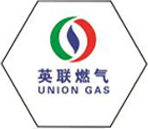
Nov . 12, 2024 08:42
Back to list
gas coalescer
The Significance of Gas Coalescers in Industrial Applications
In the realm of industrial processes, effective separation and purification of gases are essential for ensuring operational efficiency and product quality. One significant player in this domain is the gas coalescer, a device engineered to separate and aggregate fine liquid droplets from a gas stream. As industries evolve and demand for cleaner emissions and higher product purity increases, the importance of gas coalescers has never been more pronounced.
Understanding Gas Coalescers
Gas coalescers operate on the principle of removing entrained liquids from gaseous streams. They are typically designed to handle low liquid loadings and can separate liquid from gas without the need for additional energy inputs, making them both energy-efficient and cost-effective. The core mechanism involves the coalescing of small droplets into larger ones, which are then gravitationally separated from the gas stream.
Coalescing elements, usually made of fibrous materials, play a key role in this process. As a gas mixture passes through the coalescing media, smaller droplets collide and merge with larger ones, thereby increasing their size. Once the droplets reach a critical size, they become heavy enough to overcome the drag force of the gas and fall to the bottom of the separator.
Applications Across Industries
Gas coalescers find widespread application across various industries, including oil and gas, chemical manufacturing, and power generation. In the oil and gas sector, they are instrumental in ensuring that natural gas is free of water and liquid hydrocarbons before it is transported or processed. This not only protects pipelines and processing equipment from corrosion but also maximizes the quality of the end product.
gas coalescer

In chemical plants, gas coalescers play a critical role in maintaining product purity. Many processes involve the use of gases that can carry minute droplets of condensate or other contaminants. The installation of a gas coalescer upstream of sensitive equipment, like gas compressors and turbines, helps prevent damage and downtime, ultimately leading to enhanced operational reliability.
Moreover, in the power generation industry, gas coalescers are vital for reducing emissions. They assist in the removal of water vapor and other contaminants from flue gases before they are released into the atmosphere. By efficiently coalescing and separating these liquids, gas coalescers contribute to meeting environmental regulations and standards.
Benefits and Considerations
The advantages of using gas coalescers are manifold. Firstly, they improve the overall efficiency of gas processing systems by removing harmful contaminants that could otherwise obstruct machinery and lower product quality. Secondly, their relatively low operational costs make them an economical choice for many companies seeking to optimize their processes.
However, successful integration of gas coalescers into industrial systems does require careful consideration. Factors such as the size of the droplets to be removed, gas composition, temperature, and pressure must be taken into account to design the most effective coalescing solution. Regular maintenance and monitoring are also crucial to ensure that coalescers operate at peak performance, preventing potential system failures.
Conclusion
In summary, gas coalescers are integral to the effective separation and purification of gas streams in numerous industrial applications. Their ability to enhance operational efficiency, protect equipment, and ensure compliance with environmental standards highlights their significance in today’s industrial landscape. As industries continue to innovate and place greater emphasis on sustainability and efficiency, the role of gas coalescers will only grow, contributing to a cleaner and more efficient future. Investing in advanced coalescing technologies is not merely a choice but a necessity for industries aiming to thrive in a challenging and competitive marketplace.
Latest news
-
Safety Valve Spring-Loaded Design Overpressure ProtectionNewsJul.25,2025
-
Precision Voltage Regulator AC5 Accuracy Grade PerformanceNewsJul.25,2025
-
Natural Gas Pressure Regulating Skid Industrial Pipeline ApplicationsNewsJul.25,2025
-
Natural Gas Filter Stainless Steel Mesh Element DesignNewsJul.25,2025
-
Gas Pressure Regulator Valve Direct-Acting Spring-Loaded DesignNewsJul.25,2025
-
Decompression Equipment Multi-Stage Heat Exchange System DesignNewsJul.25,2025

